General description
The synapsins are a family of proteins that have long been implicated in the regulation of neurotransmitter release at synapses. Specifically, they are thought to be involved in regulating the number of synaptic vesicles available for release via exocytosis at any one time. Synapsins are encoded by three different genes, synapsin I, II and III, and different neuron terminals will encode different amounts of these; synapsin will make up 1% of total brain protein at any one time.
Current studies suggest the following hypothesis for the role of synapsin: synapsins bind synaptic vesicles to components of the cytoskeleton which prevents them from migrating to the presynaptic membrane and releasing transmitter. During an action potential, synapsins are phosphorylated by Ca2+/calmodulin-dependent protein kinase II, releasing the synaptic vesicles and allowing them to move to the membrane and release their neurotransmitter.
Specificity
Synapsin I (Mr of 80,000 and 77,000). Synapsin is located only in brain nerve terminal and is an excellent marker for synapes. Immunolabeling is blocked by preadsorption of the antibody with synapsin I.
Immunogen
Synapsin I (mixture of Ia & Ib) purified from bovine brain.
Application
Research Category
Neuroscience
Research Sub Category
Synapse & Synaptic Biology
This Anti-Synapsin I Antibody is validated for use in ELISA, IC, IH, IH(P), IP, WB for the detection of Synapsin I.
Western blotting:
1:200-1:1,000 dilution of a previous lot was used.
Immunocytochemistry:
1:500-1:2,000 dilution of a previous lot was used.
Immunoprecipitation:
1 μg of a previous lot immunoprecipitated all of the synapsin I from a SDS homogenate of 200 μg of rat brain protein.
Note: The above dilutions are with 35S-protein A; with ECL dilutions may need to be considerably higher to obtain specific immunolabeling.
Immunohistochemistry:
1:500-1:2,500
ELISA:
1:2,500-1:10,00
Optimal working dilutions must be determined by the end user.
Quality
Immunohistochemistry(paraffin):
Synapsin I (AB1543P) representative staining pattern/morphology in rat hippocampal neurons. Tissue was pretreated with Citrate pH 6.0, antigen retrieval. This lot of antibody was diluted to 1:1000, IHC-Select
IHC-Paraffin Staining With Epitope Retrieval:
Rat Hippocampus
Target description
77 & 80 kDa
Linkage
Replaces: MAB355
Physical form
Format: Purified
ImmunoAffinity Purified
Purified rabbit polyclonal in buffer lyophilized from 5 mM ammonium bicarbonate. Reconstitute with 50 μL of PBS.
Storage and Stability
Stable for 1 year at -20ºC from date of receipt.
Analysis Note
Control
Brain tissue.
Other Notes
Concentration: Please refer to the Certificate of Analysis for the lot-specific concentration.
Legal Information
CHEMICON is a registered trademark of Merck KGaA, Darmstadt, Germany
Disclaimer
Unless otherwise stated in our catalog or other company documentation accompanying the product(s), our products are intended for research use only and are not to be used for any other purpose, which includes but is not limited to, unauthorized commercial uses, in vitro diagnostic uses, ex vivo or in vivo therapeutic uses or any type of consumption or application to humans or animals.
biological source: rabbit. Quality Level: 100. antibody form: affinity purified immunoglobulin. antibody product type: primary antibodies. clone: polyclonal. species reactivity: human, mouse, rat, bovine. manufacturer/tradename: Chemicon®. . technique(s): ELISA: suitable, immunocytochemistry: suitable, immunohistochemistry (formalin-fixed, paraffin-embedded sections): suitable, immunoprecipitation (IP): suitable, western blot: suitable. NCBI accession no.: NM_006950.3. UniProt accession no.: P17600. shipped in: dry ice. target post-translational modification: unmodified. Gene Information: human ... SYN1(6853). Storage Class Code: 11 - Combustible Solids. WGK: WGK 1.- UPC:
- 12352203
- Condition:
- New
- Weight:
- 1.00 Ounces
- HazmatClass:
- No
- WeightUOM:
- LB
- MPN:
- AB1543P












